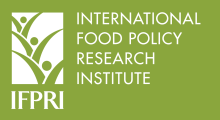Resource information
The 2013 Global Hunger Index (GHI), which reflects data from the period 2008-2012, shows that global hunger has improved since 1990, falling by one-third. Despite the progress made, the level of hunger in the world remains “serious,” with 870 million people going hungry, according to estimates by the Food and Agriculture Organization of the United Nations.Across regions and countries, GHI scores vary considerably. South Asia and Africa south of the Sahara are home to the highest GHI scores. South Asia significantly lowered its GHI score between 1990 and 1995, mainly thanks to a large decline in underweight in children, but was not able to maintain its fast progress. Social inequality and the low nutritional, educational, and social status of women continue to contribute to the high prevalence of underweight in children under five. Africa south of the Sahara did not advance as much as South Asia in the 1990s. Since the turn of the millennium, however, Africa south of the Sahara has shown real progress, and its GHI score is now lower than South Asia’s. More political stability in countries earlier affected by civil wars in the 1990s and 2000s meant economic growth could resume. Advances in the fight against HIV and AIDS, a decrease in the prevalence of malaria, and higher immunization rates contributed to a reduction in child mortality. Since 1990, 23 countries made significant progress, reducing their GHI scores by 50 percent or more. Twenty-seven countries moved out of the “extremely alarming” and “alarming” categories. In terms of absolute progress, the top ten countries in terms of improvements in GHI scores since 1990 were Angola, Bangladesh, Cambodia, Ethiopia, Ghana, Malawi, Niger, Rwanda, Thailand, and Vietnam.




